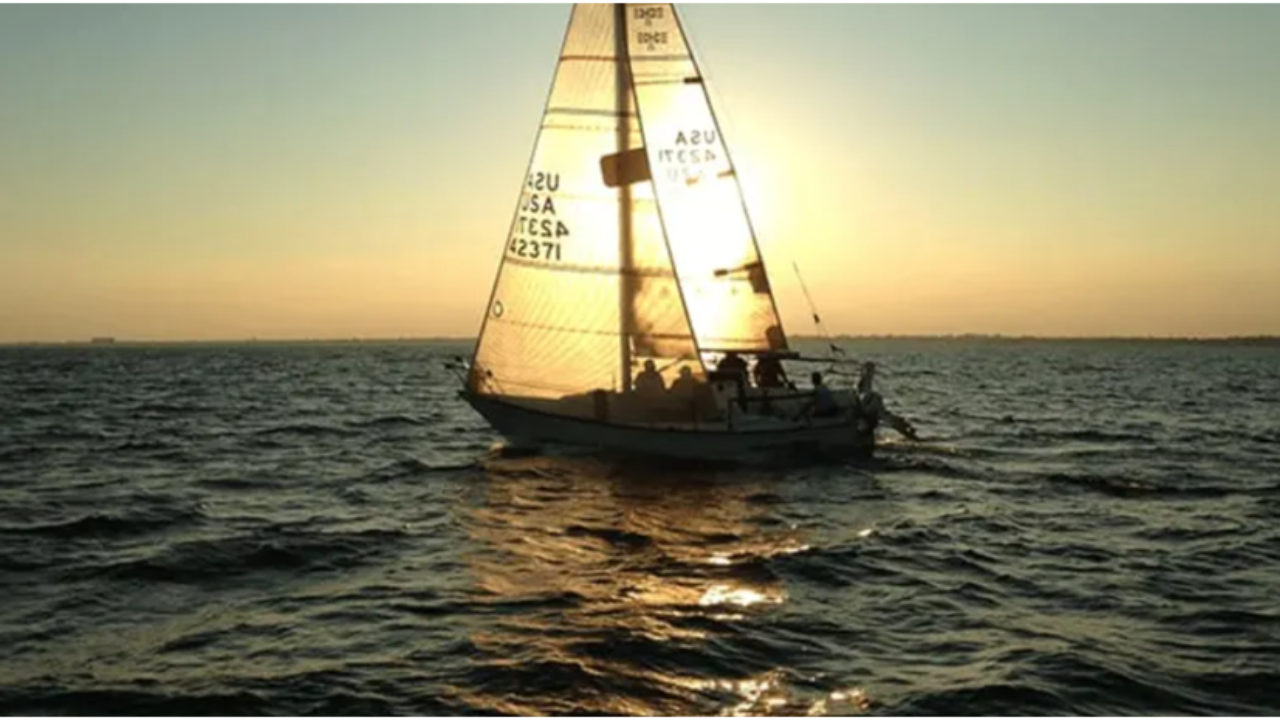“Which AGM batteries are there for my boat?” – You can easily find the right battery type and model for your boat in the categories. Here you will find almost all manufacturers and models available for maritime applications.
Special Features of Agm Batteries – What Do I Have to Pay Attention To?
AGM batteries come in different sizes and capacities. You will find all variants from 0.5 kWh to 3 kWh capacity in our shop. The batteries can usually be connected in parallel and series as desired. There are no upper limits. Depending on the requirement, you need around 0.5 kWh of power per tonne per hour of travel time in displacement travel and exponentially more in planning trips. For planning, we recommend due to the weight but not AGM batteries.
The batteries are connected directly to the motor via a cable. The closer the lithium marine batteries are to the engine, the fewer losses are caused by cable lengths. If you have any questions about cable thickness, we’re happy to help!
The batteries can be connected to the motor in a much more convenient and user-friendly way using plugs or battery terminals. Of course, you can purchase the batteries without additional cables and connectors and connect the wires. Deep AGM batteries are particularly suitable for 12-volt and 24-volt rear engines, and the capacity is also sufficient for short or fishing trips. Depending on your use, we will recommend the right size for you.

Weight of AGM Batteries
AGM batteries are a further development of the classic lead-acid batteries, in which the acid is bound in a glass fleece. This results in the batteries being leakproof and offering higher performance. The lead causes the batteries to weigh around 30 kg per kilowatt hour.
With many sailing boats, the additional weight is irrelevant or serves as a weight in the hull. AGM batteries are also often well suited for large displacement engines. On the other hand, for semi-planing and planning boats, weight per kWh is often essential, so we mostly recommend lithium batteries.
Regardless of the battery technology, you should ensure a comfortable weight per pack.
Charging Cycles of An AGM Boat Battery
The charging cycles can vary greatly. The charging cycles are usually specified with a degree of discharge. (DoD = depth of discharge) The deeper the batteries are discharged, the lower the charging cycles. At 50% DoD, high-quality AGM batteries last 750 cycles, but conventional AGM is significantly less. They should not be discharged any lower than this since irreversible damage can occur. This means that most batteries have a service life of 5 to 10 years, depending on their use.
However, there are also higher-quality battery packs. These cells can be partially discharged up to 80% (deep cycle) or 100% (superbike) and are not damaged. The price differences are reasonable, so we recommend at least the deep-cycle technology such as Aquamot or Renogy. The Super-Cycle technology is still very new and has mainly been found at Renogy.
Prices AGM batteries
The prices depend on various factors. A cost per kWh of €220 to €300 is reasonable. In individual cases, prices of over €300 per kWh are also possible for the special Super Cycle batteries. You can often find suitable AGM batteries in car workshops for less money. We usually recommend the batteries from Renogy in connection with the chargers. Of course, the complete system from Aquamot matches the Aquamot electric drive.
Most AGM accumulators are manufactured based on AGM (Absorbent Glass Mat). This is a form of lead-acid battery design and is often known as VRLA technology. Depending on the battery type, different connections and components are possible. In general, the batteries are very leakproof and not susceptible to faults.
AGM Batteries for Boat Motors – Which Manufacturers Are There?
AGM batteries are widely used in boats, cars, and caravans and have often wholly replaced the classic lead-acid battery. Many are familiar with Varta batteries from the automotive sector.
These batteries are also used in the boat sector. We rely on AGM batteries from Aquamot, which are technically equivalent to the well-known batteries from Zenith. We also offer the Deep Cycle and Super Cycle AGM batteries from Renogy as a good alternative.
Advantages and Disadvantages of AGM Over Lithium
A significant advantage is the lower price per kWh at first glance. The acquisition costs are still one of the most critical issues with the e-drive since lithium technology is often twice as expensive. Besides the price, there are no significant advantages.
Depending on the technology, the discharge depth is lower; therefore, less capacity can be used effectively per kg of battery. AGM batteries can usually be discharged up to 50%. Depending on the technology, AGM batteries are already damaged from 50% discharge and should not be deeply discharged. They tend to be more suitable for shorter trips. You should always pay attention to this during use.
In addition, an AGM battery weighs three times as much as a 12V lithium ion battery. In addition, AGM batteries usually only have 750 charging cycles, and lithium batteries have up to 5000 processes. Therefore, the price difference is put into perspective quite quickly. If I have to buy two battery packs in the same period of use, an AGM battery is probably not worth it.
An AGM battery can be stressed less, too. Currents should be only one-fifth of the capacity (0.2 C) to achieve a reasonably good life and driving time. The faster an AGM battery, the less energy (Ah) the battery delivers. The batteries are usually specified as C20, i.e. for a discharge of more than 20 hours. If discharged in 5 hours, only approx. 80% of the indicated Ah can be used. With a release in two hours, even less than 70 per cent!
The bottom line is that the advantages of the lithium battery are clear. Our recommendation is long-life lithium batteries, but AGM batteries may be helpful or even better for occasional use.

AGM Battery Monitoring
A battery management system monitors a lithium battery. The BMS offers protective mechanisms and outputs essential parameters. This is different from an AGM battery. You can usually only read out the key figures via a separate display. Fortunately, the battery hardly needs any further protection mechanisms and offers fewer sources of error.
Installing an AGM battery
Depending on how fit you are in handling batteries, we recommend ready-made solutions or at least individual components. Complete systems are usually easy to connect via plug & play. However, you can save a few euros if you do the wiring yourself or don’t use a protective plug and instead join the poles directly to the cable.
Charging is easily possible via a battery charger and access to shore power with a charging capacity of up to 3 kW. Marinas, therefore, offer the possibility to charge the supply and drive batteries after use across the board.
